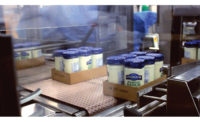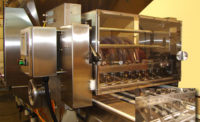Winter Driving Tips from One Trucker to Another

Getting your driver’s license is a big milestone in one’s life. But, that defining moment is quickly followed by a string of advice about the dos and don’ts of driving,  especially during the winter months. Now, as a professional truck driver, the “newness” has worn off, and as you continue to put more miles in, you begin to develop your own driving styles and habits and spend less time in preparation. After all, truckers drive every day without any troubles, right?
especially during the winter months. Now, as a professional truck driver, the “newness” has worn off, and as you continue to put more miles in, you begin to develop your own driving styles and habits and spend less time in preparation. After all, truckers drive every day without any troubles, right?
But, have today’s truckers reached a skill level to prevent the unexpected or have we all just been lucky? I would say many have been lucky, some very lucky. As a professional truck driver, I see some of the ones where their luck has run out on them nearly every day.
We cannot avoid every situation on the road, but we can at least prepare to lessen the chance or the severity of road incidents. Every season has its challenges, and winter is no different.
This winter has been one of the most severe across the United States in a long time. Each day, we learn about something tragic that has happened on our highways due to snow, ice and whiteout conditions. Many of us have had friends and family stuck on the highways, and in some cases, even knows a few babies that have been delivered in the freezing cold.
Here are some tips on how to handle Mother Nature and all of her surprises, from one trucker to another.
Always be prepared. In the winter, preparation is the most important factor, and in some cases, the difference between life and death. Pay close attention to the weather updates and only venture out if necessary when adverse conditions are forecasted. Make plans to stay off the roads and in a safe warm place with hot chocolate and friends, so that safety and fellowship can be enjoyed.
Get your truck inspected frequently. A good inspection of the vehicle is a must. If you are not sure about some of the mechanical functions or requirements for the area you will be traveling, then take it to a professional you can trust. Most shops will have a reasonable fee or preform an inspection free of charge. You will need to check the suspension, drive line, brakes and differentials regularly and the tires, fluids, belts, lights and wipers daily. When checking the tires, make sure the air pressure is correct, that they offer good tread and that the lug nuts are tight. Check the function of the wipers along with the condition of the blades. Whether you are making a trip to grandma’s or a daily drive to work, you need your vehicle to be capable of delivering you to your most important stop—your family.
Map out your route ahead of time and have snacks on hand. Know the route you will be traveling, and plan to leave early in case you are required to take an alternate route or the weather changes. Make sure you have water and some type of food to sustain you and your passengers if you get caught on the highway or break down en route.
For example, I was on my way to a meet point, when the truck I was driving suddenly lost all the coolant and the motor shut down. I left the facility that day thinking it would be a normal day and I would return home as usual. It was around 30°F and it took five hours to wrecker another truck to me. Because I planned ahead, I had a pair of insulated coveralls in the truck and was able to stay warm. I also had food and water in my lunch box for the trip. On another run, the roads were fine but the weather was calling for some possible rain for the evening. All was moving fine until there was an accident ahead on the interstate. While we were stopped waiting for them to clear the northbound lane, the road froze over with us parked on it. The traffic never stopped moving on the southbound lanes, and I spent the next 12 hours watching traffic drive by as we were frozen in place.
Also, place some warm clothing or a blanket in a storage area along with a flashlight, which is useful for working in the dark or for signaling distress if necessary.
Warm up the engine. Other winter tips would include letting the vehicle run to warm up the engine and get the fluids circulating. If there is a problem that has developed with the vehicle, you will know it before you are away from home and in the flow of traffic. This will also improve the performance of the defroster if needed.
Charge your cell phone. Be sure that your cellular device is fully charged and always have a car charger on hand. Only use the cellular device when the vehicle is stopped and out of traffic.
Every trip can be exciting and/or educational, but plan ahead so it will be what you expected and not remembered for what you did not expect.
Looking for a reprint of this article?
From high-res PDFs to custom plaques, order your copy today!








